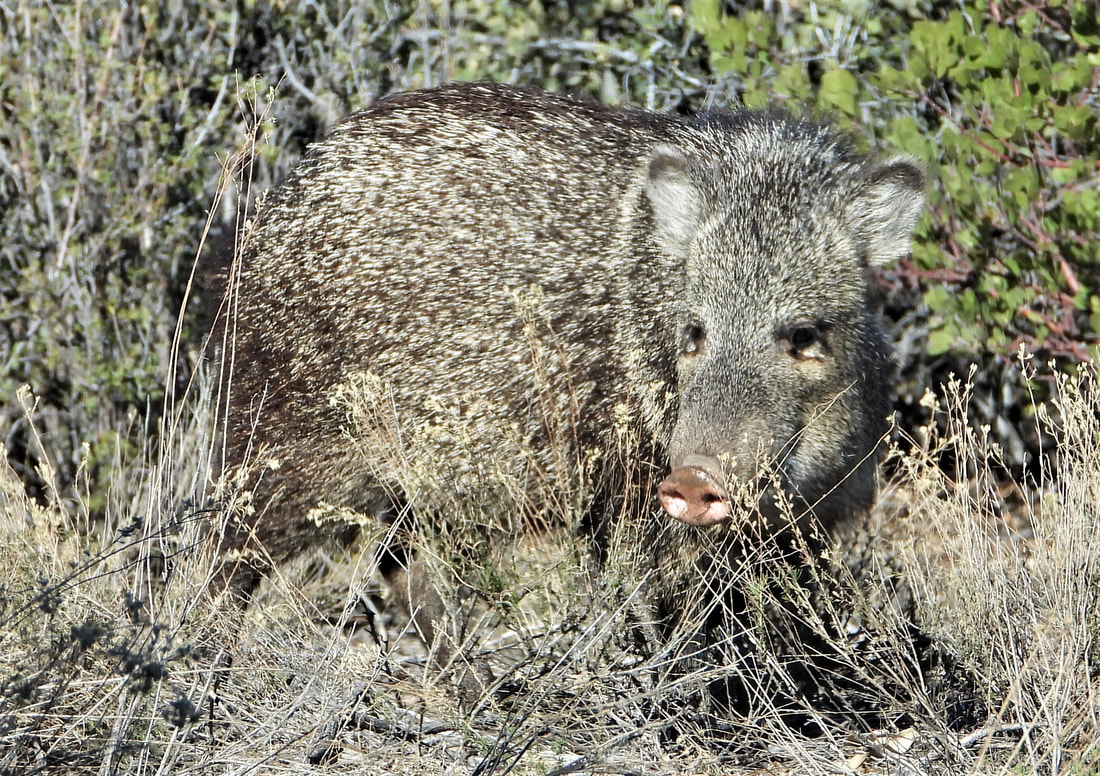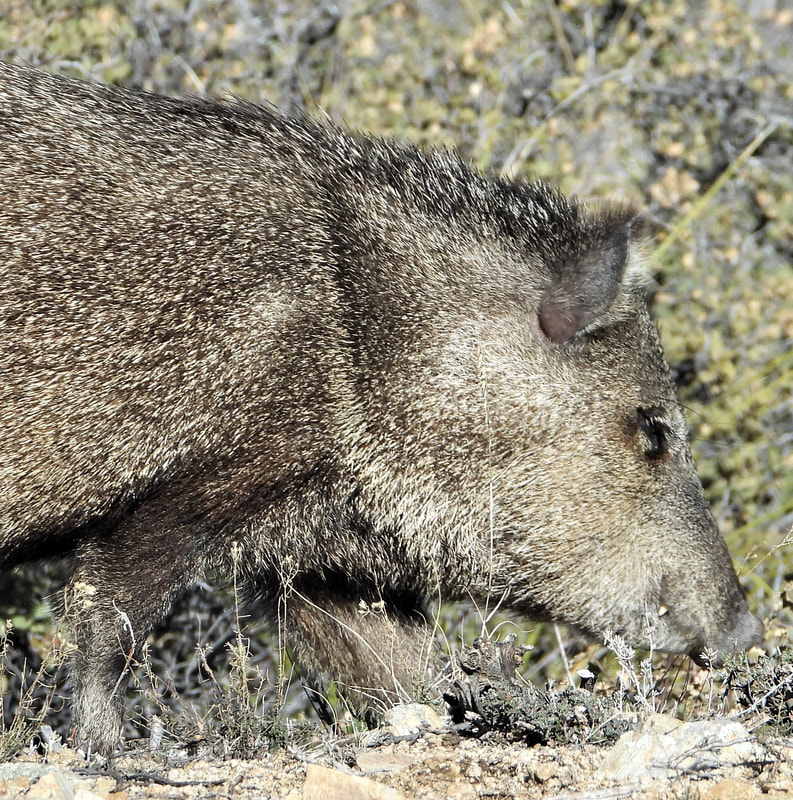Despite the uncanny resemblance, Javalina are technically not related to "Old World pigs" (Suidae). Our desert critter, the Tayassy tajacu, actually belongs to the family Tayassuidae, or New World pigs. (Yeah, TMI. Sorry.)
At this Arizona Sonora Desert Museum link you'll find a picture with a wee baby. (I don't care what anyone says. They're stinkin' cute!) Since they don't have a set breeding season, babies can show up any time, even during last winter's two-foot snow storm! Unfortunately, I've never managed to snap a baby picture.
The Desert Museum link also has a button to play "a variety of Javalina sounds." But the smell... well, you have to be there. It's very skunk-like, and I'm not convinced I can tell the difference between skunk and peccary by smell alone. My mother can, though! What a nose she has!
I took the above video when a herd of about a dozen sauntered through last week. This fella' is grubbing around our yucca and small native plants (AKA weeds). S/he is probably digging up some juicy bugs and tubers. Javalina are primarily herbivores, but also enjoy carrion when they can find it, and a bit of tasty human trash when it presents itself.
Note the teeny tiny tusks in the photo above. Those teeth are actually bigger than they look. Some of the iStockPhotos in this link show more arresting views. (BTW, don't you love the delicate fringe of eyelashes over that bedroom eye?)
Javalina don't attack humans, either to eat them (primarily herbivores, remember) or in defense. They're far more likely to run and hide when they see us. But they don't see very well, so it's best not to sneak up on them. Also, people who carry food out to them have on occasion been skewered by tusks and teeth. Another reason to just let them be wild.
I blame my shortage of pictures on the fact that they blend into the underbrush so well, and that they're most active at night. (I do have several shapeless blobs in my nighttime photos.) So, here's a lovely video and some more information on the javalina or collared peccary at this Arizona Leisure link.
Enjoy!


